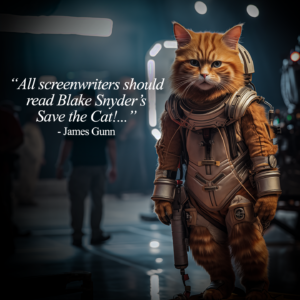
This is the first of a series of blogs by Geoff Harris on the STC! principles and TV writing. Before becoming a freelance writer/producer, Geoff was Vice President in charge of Story and Writer Development at NBC, where he worked for 12 years. He also has taught TV-writing intensive workshops for Native American and Latino writers, sponsored by ABC and NBC, as well as a Web Series writing class for MFA students at Cal State University, Los Angeles. Many of his workshop students have gone on to staff positions on TV shows, including Third Watch, Samantha Who? and Medium.
“I hate tv!”
That’s what a screenwriter friend shouted as he sat down across the table from me at a Studio City Starbucks the other day.
Being a TV guy, I’m used to hearing condescending remarks from screenwriters. I expected him to lash out about how TV is mindless entertainment and how it rots your brain.
I took his bait: “OK, why do you hate TV?”
“I hate TV because it’s so well written.”
What? I was shocked. My friend verbalized what I had always thought: Week in and week out, TV offers compelling and memorable scripted shows.
Look at Breaking Bad, Lost, and Mad Men, to name a few dramas. Each episode is like a mini-movie.
And on the comedy side, there are cleverly written shows, whose 22-minute episodes entertain and delight — such as 30 Rock, Two and a Half Men, and The Big Bang Theory.
Sure there are some poorly written series, but there are also plenty of poorly written movies — you know, the ones that leave you asking why you wasted two hours of your life watching them.
Besides, a screenplay can take years to go from idea to screen — whereas a TV series, staffed with terrific writers, comes up with compelling ideas that go from script to screen in a couple of months.
Like features films, not all TV shows are created equal. Some suck. But those that are great can thank their writers, who know a thing or two about structure.
My friend’s remark got me thinking about Blake Snyder’s beat sheet for feature films. Do the 15 beats apply to TV series? And, if so, by hitting those beats does the writer end up with a well-written series?
So I pulled out a copy of the Breaking Bad pilot episode and analyzed it to see which beats it hit, if any.
Drum roll, please.
Sure enough, a TV pilot hits those same beats. Subconsciously, Vince Gilligan‘s pilot script, which he wrote in 2005 and is one of the first drafts, follows Blake’s template, with a few exceptions. btw, Vince co-wrote (with Chris Carter) one of my favorite X-Files episodes, “Soft Light.”
The following are the beats (calculated for a 57-page script, using the Screenplay Beat Calculator found on this website) and their corresponding page numbers (on the pilot script):

1. Opening Image (pg 1): An RV, driven by a crazed man in his underpants (main character Walt, played by Bryan Cranston), barrels over a pile of cow poop and crashes. (pgs 1-2)
2. Theme Stated (pgs 1-3): Speaking into a camcorder, Walt states his love for his family and explains that what he’s done, he’s done for them. A man must provide for his family. (p. 3)
3. Set-Up (pgs 1-5): The Teaser, in which Walt crashes his RV and uses a camcorder to record a cryptic farewell to his wife and son, before waiting, gun in hand, for the police to arrive. (pgs 1-3)
4. Catalyst (p. 6): Walt sees on TV that his DEA brother-in-law Hank broke up a meth lab and confiscated $700,000. (p. 13; seven pages later than desired.)
5. Debate (Half Commitment) (p. 6-13): Walt debates his next move, as he puts up with snooty students at school, swallows his pride at his job at a carwash when he dries the car of one of his disrespectful students, and listens to Hank suggest that Walt become more pro-active in his moonlighting job by turning in the carwash owner to immigration authorities. (pgs. 6-13)
6. Break into Two (pg 13): The first act in the three-act structure ends with Walt collapsing (from his illness) at Cal Tech, his alma mater. (Note: Traditional TV dramas are structured in four acts, with Acts Two and Three corresponding to Act Two in a feature film.) (pg 17; four pages later than desired.)
7. B Story (Subplot Intro by) (pg 16): No Subplot. (Two potential subplots: Walt’s wife’s pregnancy and his relationship with fellow teacher.)
8. Fun and Games (pgs 16-29): As Walt’s life spirals down when he learns he has cancer and two years to live, he cooks up a plan to leave money for his family. (pgs 16-29)
9. Midpoint (pg. 29): Walt partners with former student and drug dealer Dupree to manufacture and sell meth. (pgs. 29-31)
10. Bad Guys Close In (pgs 29-39): In this story, Walt is his own Bad Guy. Although he has a good motive (to help his family out financially before he dies), Walt is his own enemy. Here the “Bad Guy” does close in as he decides to partner with Dupree and, borrowing against his house, gets money to buy an RV that will serve as their mobile meth lab. (pgs 29-40)
11. All Is Lost (Low Point) (pg 39): Walt orders Dupree to buy the RV, thereby beginning his life of crime. (pg 40)
12. Dark Night of the Soul (pgs 39-44): Walt and Dupree brew meth in the RV. (pgs 44- 46)
13. Break into Three (pg 44): Now that he’s decided to “break bad,” Walt is more confident and aggressive. He attacks three jocks who are teasing his son. (pg 43)
14. Finale (pgs 44-57): Walt and Dupree begin their business, and despite the trouble and danger, it’s lucrative. (pgs 44-57)
15. Final Image (pg 57): Walt, feeling more alive than ever, gets it on with his wife. (pg 57)
The most noticeable difference is the absence of subplot. Two are hinted at in the script, but never followed through: Walt’s wife’s pregnancy and his attraction to a fellow high school teacher.
Some differences are, no doubt, the result of TV’s peculiar nature: it’s a cross between screenwriting and playwriting, in which the emphasis is neither as strong on visual storytelling as a movie nor as strong on dialogue as a play.
Also, TV has a special need to get stories moving quickly and hold viewers, since they have an opportunity to switch channels the instant a story lags. (Like their screenwriter-relatives, TV writers are keenly aware that Stasis = Death.)
In short, like feature films, TV scripts need to follow certain rules in order to tell a fast-moving, entertaining story. Structure doesn’t destroy creativity — it fosters it.
Coming soon: The Importance of Character in TV Writing
Check out another look at the beats of the classic television Breaking Bad pilot!
15 Comments
Leave a Reply Cancel reply
You must be logged in to post a comment.










I would be interested in how the beats fall in relation to commercial breaks. Now, I’m going to start recording TV shows or study.
Geoff, THANK YOU! Awesome Beat breakdown! And SOFT LIGHT, was a great X-File episode!
This is great. I am actually developing on spec, a Serious Bible for cable and I just started working on the pilot treatment. Thank you.
Thank you Geoff and Thank you STC! What a great Beat Sheet breakdown! Looking forward to more from you in the future!
Great stuff, Geoff. Looking forward to your future posts.
Great work, Geoff. Now if you could just hit a blindfolded three pointer while standing on one leg, you’d be unstoppable.
Great blog! Do you have any classes scheduled in the LA area?
Do STC beat can also use as a bible for tv shows. It’s great that it can be use for an one hour episode, but my main worried is first the whole lay of the season of a show. I cannot find a good decent Bible to follow.
Excellent analysis and figuring out the structure of a pilot a very interesting exercise. I haven’t seen the script but the timing of things is somewhat different in the actual pilot, I would also label some the turning points differently though and would be interested to know what you think.
The Catalyst is Cancer’s arrival on the scene (15-19 Mins) from Walt’s collapse, to the Doctor telling him he has cancer after 19 mins. His interest in the DEA bust was amazement at the amount of money. The cancer transformed this amazement into him taking action and leads him to call Hank to take him up on the offer of the ride along. He is now actively exploring and pursuing the meth solution to his problems.
That phone call to Hank is the Break Into 2. (21 mins)
The Fun and Games: Walt on the Dea bust, Walt and Jesse’s interaction as they try to get the meth lab going, chemistry -v- Art, buying the Winnebago, beating up and then facing down the big jock bullying his son and finally cooking up the meth, perfect crystals, “pure glass”. (22-41) mins
Bad Guys Close in is where things begin to come off the rails for Walt. Emilio and Crazy 8 force Jesse to drive them out to Walt, with guns and seriously talking about killing the two of them 45-51. Walt takes desperate measures, poisoning both and fleeing the fire wildly until finally the noose is tightening around him, he crashes and the sirens sound in the distance.
Dark Night of the Soul is also the theme stated, the frantic video message to his family. It is taken out of chronological order and placed at the start. It is so dramatic that it keeps the audience hooked for long enough to introduce the premise, situation and characters. It is not repeated at the end where we are shown the repeat of Walt crashing, but it cuts directly to him standing in his underpants with the gun in hand.
All is Lost is where he stands in his underpants and tries to shoot himself in the head (whiff of death) 52 mins
Break into 3 is where he realizes the sirens are for the fire department, sides steps what he thought was his last stand, and casually watches the fire trucks pass, with the gun behind his back.
Finale: Walt taking his money out of the tumble dryer and safely back in bed
Final Image Walt energized by his decisiveness and success forcefully take his wife who says “Walt, is that you, ahhh?” Classic by anyone’s standards
What do you think?
I think Patrick nailed it. And thanks for the article Geoff… this site should break down more tv shows.
What do you think is the genre according to Blake’s theory? Dude with a problem? Golden Fleece? This breakdown is very helpful!
I don’t understand something structure wise. In four acts it goes, I, II, II, and III. Correct? But in this BS2 you just went through it once like a normal film… or am I reading this wrong?
Thanks!
Yeah, I agree Patrick.
where did the name Dupree come from? His name is Jesse.
I know it’s been 9 years, but I was wondering the same thing. I looked it up and in the pilot script, Jesse was named Marion Alan Dupree.
The author of this beat sheet must have only worked from the script, instead of the show itself.